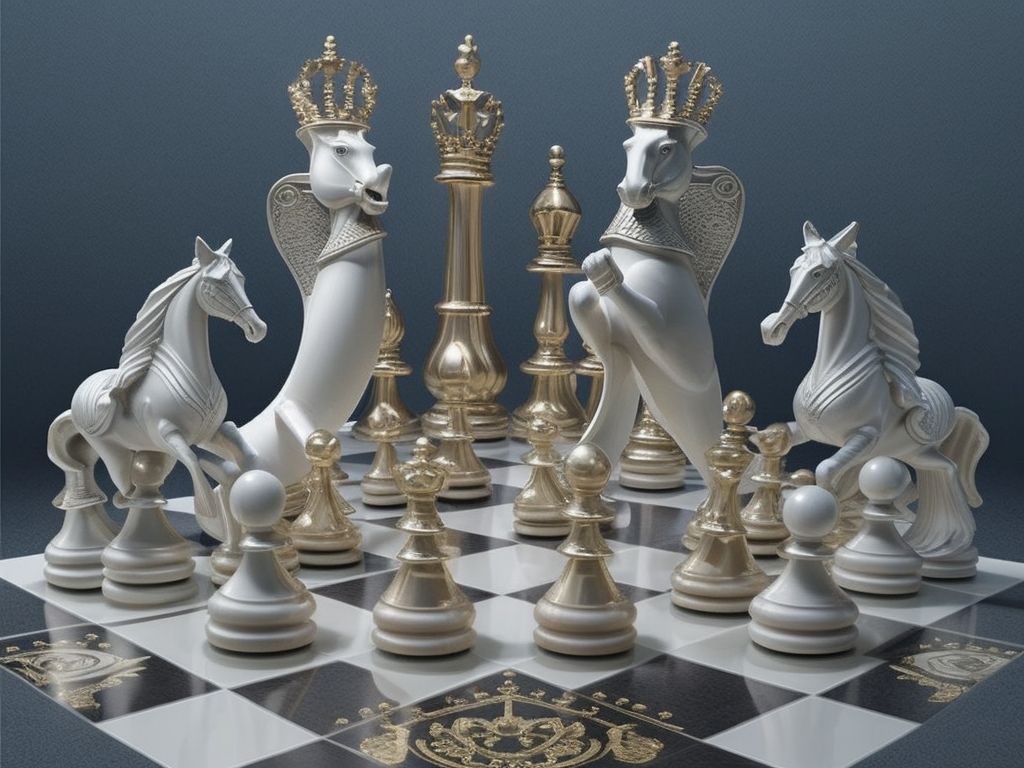What Chess Pieces Can Jump
When it comes to chess, understanding which pieces can jump is key! The knight and the fairy king (or amazon) possess this unique skill. The knight has an L-shaped move that allows it to jump over both allies and enemies. The fairy king, similar to a queen, can also jump over obstacles. Knowing these pieces’ abilities will help you gain an upper hand in the game of chess. Master their moves and use them to outmaneuver your opponents. Leaps and bounds are essential for success!
Explanation of chess rules and movement
Chess is a game that requires strategy and cunning. Every move you make can determine victory or defeat. Mastering the rules and movements of each chess piece is key to outsmarting your opponent. Let’s look at the complexities!
Each chess piece has its own way of moving. For example, the pawn can move one square forward. On the initial move, however, it can advance two squares. It captures diagonally too, providing an element of surprise.
The knight is particularly interesting as it’s the only piece that can jump over other pieces. Its L-shaped pattern of two squares in one direction and then one square in a perpendicular direction enables knights to bypass obstacles.
Bishops can move diagonally. They can slide as far as they want along their diagonal path until they reach another piece or are blocked by their own team members.
Rooks are renowned for their unrestricted horizontal and vertical movements. They can slide along these lines as far as they want, making them great for controlling space on the board.
The queen is the most powerful piece. Combining rook and bishop movements, she can traverse any number of squares vertically, horizontally, or diagonally.
The king is the most humble piece, but still essential. His movement is limited to one square at a time, so every step must be calculated carefully.
Pro Tip: Knowing how each chess piece moves gives you an edge. Visualize their movements and strategize several steps ahead!
Definition of “jumping” in chess
In chess, ‘jumping‘ refers to the ability of certain pieces to move over other pieces on the board. This allows them to bypass obstacles and reach their destination strategically. The knight is one such piece, able to leap over obstructions and capture its opponent’s piece without landing directly on it. Pawns also show an interesting form of jumping by capturing diagonally. Kings too can jump impressively. A famous match saw one king make multiple daring leaps across the board to escape checkmate – showcasing the power this piece can possess.
Explanation of chess pieces that can jump
The Knight is the only chess piece that can jump over other pieces. It moves in an L-shape; two squares in one direction and then one square perpendicular to it. Thus, it can be very versatile on the board, navigating through a crowded board and surprising opponents with unexpected moves.
Unlike other pieces, it doesn’t capture by landing directly on an opponent’s piece. Instead, it replaces the captured piece on its destination square.
This jumping ability makes the Knight a powerful attacking piece and an essential defensive tool. It can control different areas of the board simultaneously and quickly reach distant squares. Plus, it’s unpredictable and challenging to plan against.
The Knight has an iconic horse-like shape and holds significant cultural value in chess traditions around the world.
Once, during a tournament, a player used their Knight’s jumping ability to bypass several pieces and deliver checkmate. The audience applauded this strategic brilliance and the power of the Knight’s movements.
Advanced concepts and scenarios
Chess is filled with complex concepts and scenarios. Getting a grip on these advanced ideas is key for anyone serious about becoming a chess master. Let’s look into some of them!
Here’s a table of advanced chess concepts and scenarios:
| Concept/Scenario | Description |
|---|---|
| Fork | A move where one piece targets two or more opponent pieces. |
| Pin | A piece being blocked from moving to protect a more valuable piece. |
| Zugzwang | A situation where any move made will make the position worse. |
| Stalemate | When it’s your turn but you have no legal moves. |
| Sacrifice | Giving up a piece to get ahead, often leading to a breakthrough. |
These can create unique opportunities and challenges.
It’s worth noting that chess has been around for centuries, evolving with brilliant moves and grand strategies. An interesting fact is that it began in India in the 6th century. Then it spread around the world because of its intellectual appeal.
Studying advanced concepts and scenarios can help us understand this timeless game better, so we can become better players. So keep exploring and trying out these cool chess elements!
Conclusion
We’ve explored the jumping abilities of chess pieces. One can jump over other pieces – the knight. All other pieces must move forward, without jumping. To win on the chessboard, understanding the pieces’ abilities is crucial.
Capitalize on the knight’s versatility. Use it near the center of the board. There, it can access multiple paths and jump over obstructions. This will give an advantage in defensive and offensive moves.
Create pawn barriers strategically. Pawns cannot jump, so use them to block other pieces. This limits their movement and gives you opportunities to use more agile pieces.
Harness each piece’s jumping capabilities. Outmaneuver your opponents. Victory on the chessboard is possible by understanding how pieces interact.
